Green beans are a very healthy food; there is no better food than what you grow yourself. Before growing, it’s important to learn all you can about varieties, growing requirements, harvesting, and storage.
Pole and bush beans are the two most popular green bean varieties – they’re very similar, but there are growing and care differences. Both are easy to grow with enough space and can last a very long time with proper storage methods.
Read on to learn about these varieties, the differences and the similarities, and how to grow them, care for them, harvest them, and store them.
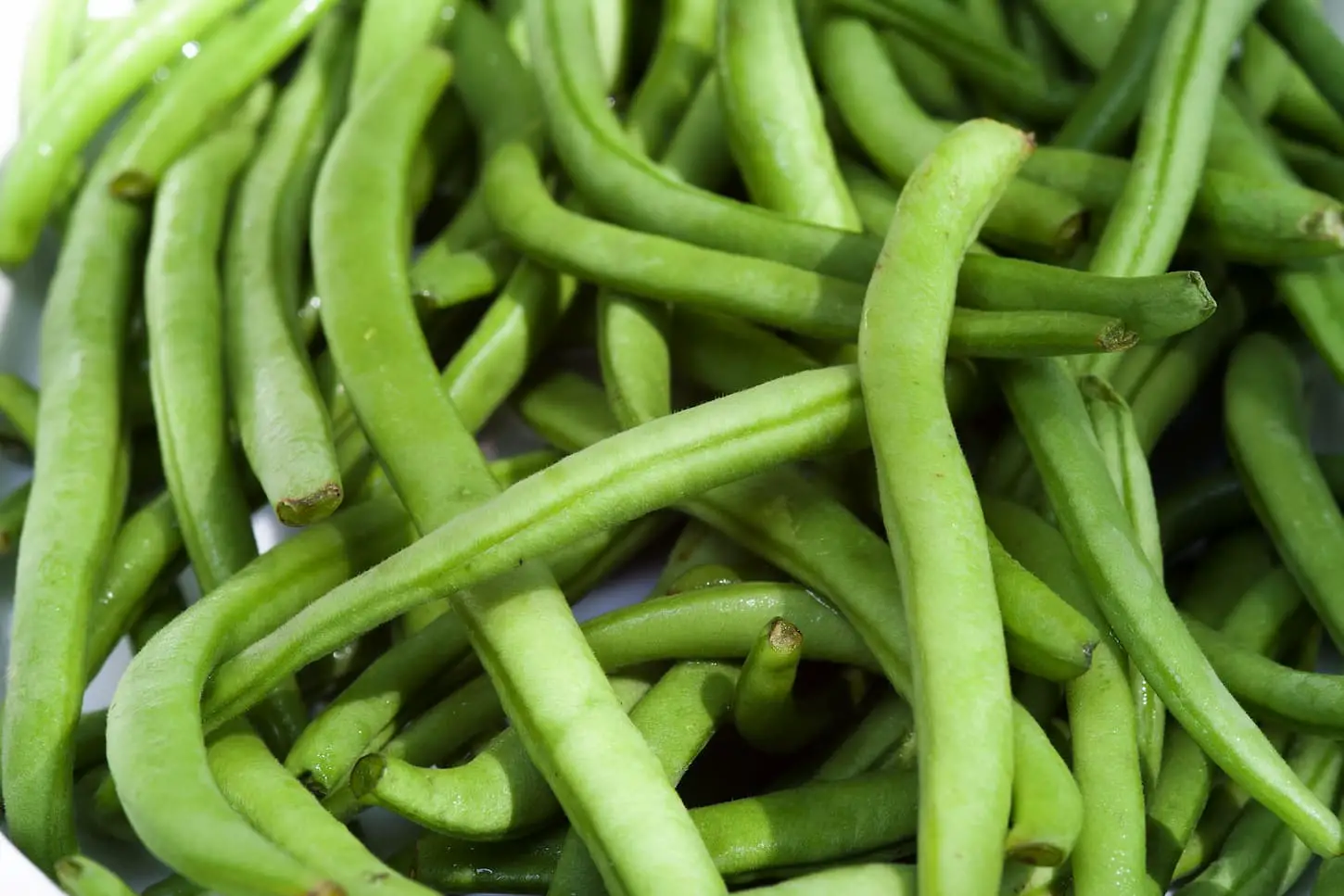
Are String Beans and Green Beans the Same?
String beans and green beans are the same things. The term ‘string bean’ was used because they used to have a string on the pod, just like peas. The string needed to be removed to eat the beans.
However, with the modern growing of beans and the creation of hybrids, beans no longer have strings, so the term string bean is technically inaccurate.
Are Pole Beans and Green Beans the Same Thing?
Pole beans are a variety of green beans – think of them as a green bean subspecies that grow up a trellis rather than on a bush.
The several types of green beans are explained in the section below.
Types of Green Beans
The main green beans are bush beans and pole beans, the difference being how they grow. Pole beans require support, while bush beans can grow free-standing (but may benefit from support if they grow too large).
Pole beans are climbing beans, often called ‘runner’ beans because of their climbing characteristics. The vines of green beans can grow to incredible heights, up to 12 feet, while they’re rarely shorter than 6 feet.
Because of this, gardeners need a lot of space to grow them, and they’re not recommended for confined spaces.
They’re called pole beans because of the support they need to grow. They need a pole or a trellis system.
Many plants, not only beans but peas and tomatoes, need a pole or a stick right next to the plant to provide stability and help them grow properly.
Pole beans are slower to grow than bush beans, but they can be harvested for a long time as the plant will continue producing even while it’s being harvested.
Lastly, pole beans are less likely to develop diseases and suffer pest infestations than bush beans.
Bush beans, on the other hand, are not climbing plants. They rarely exceed two feet in height, making them ideal for gardeners with limited free space. Also, unlike pole beans, they don’t need poles to provide stability when they grow.
That’s not to say that a bush bean wouldn’t benefit from support; I’ve had bush beans that decided to go more pole-like, and then they benefitted from a tomato cage support!
These beans grow to maturity quickly, usually less than two months after planting, and their harvesting period lasts no more than two weeks.
Lastly, unlike pole beans, bush beans, can suffer from diseases and pest infestations.
Look at the table below for a simplified viewing:
| Beans | Height | Space requirements | Pests and diseases | Growth and harvesting time | Temperature and sunlight |
|---|---|---|---|---|---|
| Pole beans | 6 to 12 feet | Need plenty of space | Hardly any | It can take more than 70 days to mature, and harvest can last for a month | Ideally – between 65 and 85°F needs at least 8 hours of sunlight |
| Bush beans | No more than two feet | Need little space | Prone to pests and diseases (such as powdery mildew) | Mature in less than 60 days, harvest lasts for two weeks | Ideally – between 65 and 85°F needs at least 8 hours of sunlight |
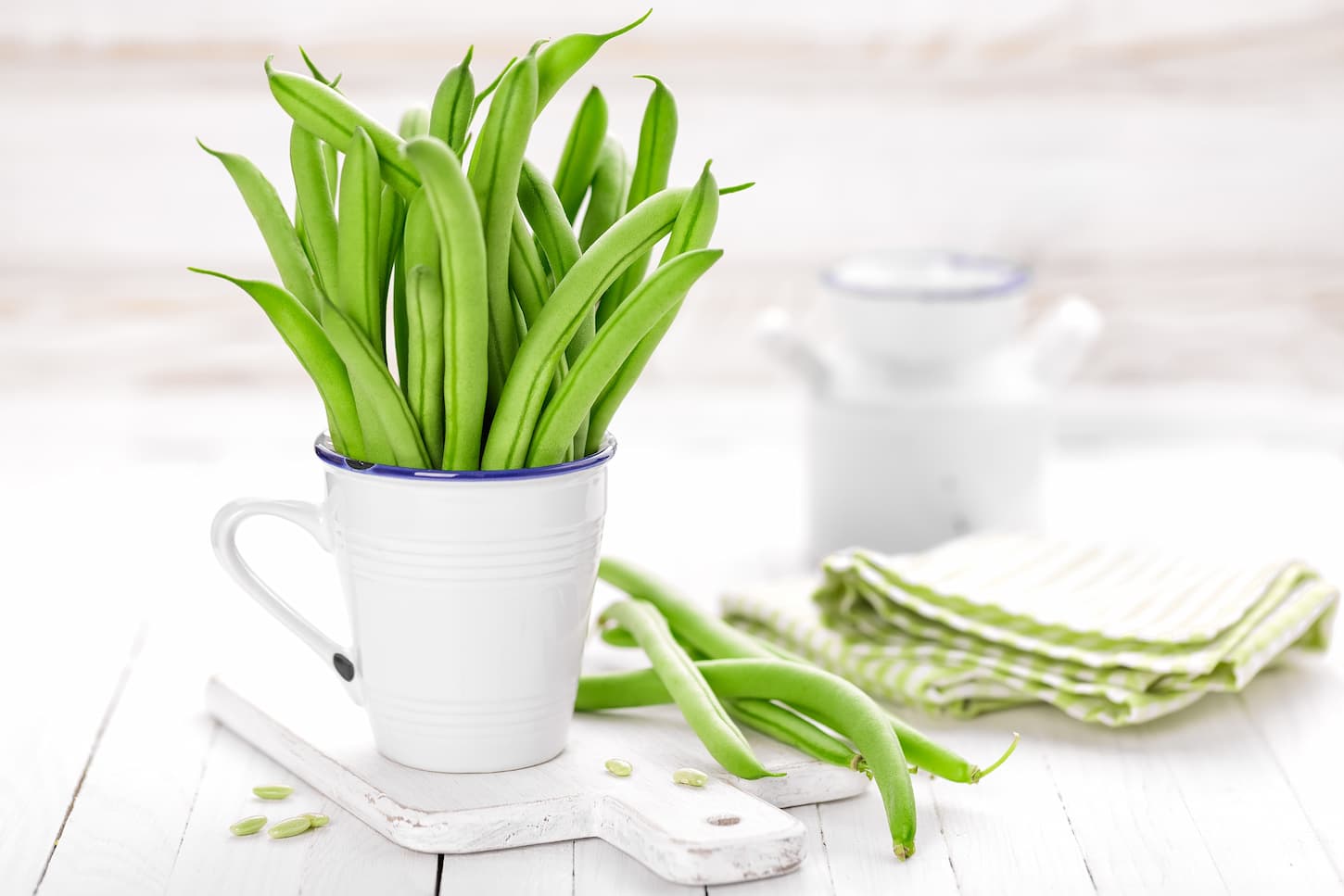
How to Grow Green Beans of All Kinds
Pole and bush beans require different growing methods, even though they are both types of green beans. Not only do they require different supports (a trellis vs none), but subvarieties will also have individual needs for proper growth and care.
Even so, let’s go into how to care for green beans based on their support requirements. We won’t cover all subvarieties in this article due to space.
Note: you should cultivate the soil before planting to minimize weeds – check the ‘Common Green Bean Problems (and How to Fix Them)’ section below for details.
How to grow pole green beans
Materials needed:
- Seeds (soaked overnight in warm water to speed up germination).
- Poles (at least 6 feet tall, but even more if you’re planting a tall bean variety), a trellis system, or temporary supports while you build a pole system.
Green beans should only be planted once there’s no more danger of frost – it will kill them since they aren’t cold-tolerant plants. Plant them when the soil is moist – if there hasn’t been any rain, feel free to soak the soil in water the day before planting.
You can start green beans (of any variety) indoors if you transplant them, though I’d recommend using a cold frame depending on the outside temperature when you transplant them.
The proper ratio of seed-to-soil is 1/3 pound of seed per 100 feet of soil – depending on the size of the garden, you’ll know how much seed to use.
Pole beans need much more space than bush beans – there should be at least 3 feet of free space between two rows (but preferably 4 feet).
Start by making small hills in your rows – one hill should be 3 feet away from the next hill. Plant the poles in the center of each hill.
The seeds should be planted around the poles, at least 1 inch deep in the soil – each pole should be surrounded by 4 seeds.
After planting, press and flatten the soil above the seeds.
How to grow bush green beans
Materials needed:
- Seeds (soaked overnight in warm water to speed up germination).
- A tomato cage protects the seedling and/or its planting space until the bush bean is established. This isn’t required, but it is nice if you have children who visit the garden!
Bush beans are much easier to plant than pole beans.
The seeds need to be planted one inch deep, but they can be 2 inches apart in the row (unlike the 3-feet distance with pole beans). The rows themselves should be at least 2.5 feet apart from one another.
Place four seeds in a single soil hill, then flatten the soil.
That’s it! Much simpler than pole beans!
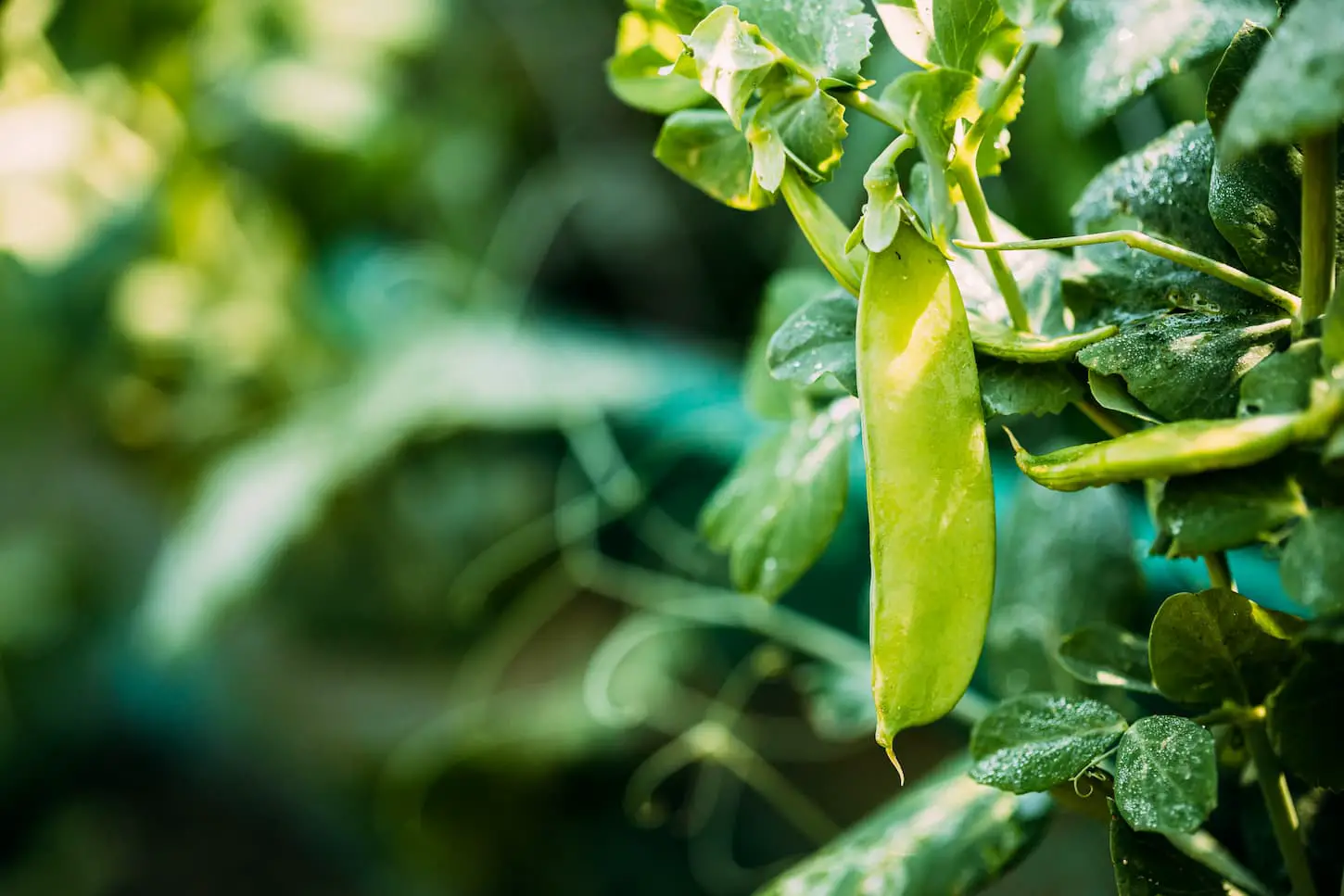
Caring for Green Beans
There are a few things that a gardener needs to keep in mind when caring for both kinds of green beans.
Sunlight
Green beans need plenty of light and will not grow well without sufficient light. If bean plants don’t get sufficient light, they will not grow well or have a good harvest.
Choose a spot with at least 8 hours of sunlight daily when planting them. This is imperative and should be the priority.
Without at least 8 hours of sunlight in the garden, it will not be possible to grow green beans. The alternative is growing them under UV lights, but that setup is much more complicated and expensive than growing them in natural light.
Growing pole beans under a UV light can get even more complicated just because they grow up poles and can get quite tall.
Water
Beans don’t require much water, but they still need some. Water beans any time the soil is dry or drying out. This is when sticking your finger in the dirt is a great way to test the soil’s dampness.
Pro tip: if you live in an arid place (like I do here in Utah), your beans will benefit from an irrigation system. That way, you can control the flow, be water smart, and keep your green beans properly hydrated and growing.
It’s essential to prevent the soil from drying out when the beans first bloom, as the blossoms will drop if the plant isn’t properly watered. Then, your harvest won’t be nearly what it could have been (source).
Fertilization
Beans need well-fertilized soil. 10-20-10 NPK ratio granular fertilizer will do very well with green beans. Using 2 pounds of it over a 10 x 10 ft area should be more than enough.
If you aren’t sure what your soil’s composition is, make sure you get a soil sample and send it off to your local agricultural department for testing before you plant anything, let alone add fertilizer.
Mulching
Weeds are a very common problem with green beans. Mulching them with 1 to 2 inches of garden-safe mulch can help decrease the weeds and the weed growth rate.
Mulch will also help your garden soil retain water, which is a huge concern during a drought.
We’ll discuss green beans’ weeding in the section below.
Common Green Bean Problems (and How to Fix Them)
The most common problem with green beans is weeds, followed by pests and diseases. Weeds, pests, and diseases require removal or control in order to help the green bean plants grow healthy, strong, and to ensure a good harvest.
Weeds
There are a lot of strong thoughts on weed control, and your particular stance will affect how you decide to handle weeds.
Option 1: Manually remove weeds
This is a surefire way to remove weeds, but it is a lot of work. You’ll probably still have to manually remove weeds even if you also pick one of the other options listed here.
Option 2: go natural with permaculture and mulch
Remember how we said to make use of mulch to help the soil retain water? It’ll also help prevent weeds from rooting or growing as quickly as they otherwise would. This will make your life so much easier. Plus, mulch will enrich the soil over time, making it a win-win situation.
Option 3: make use of cultivation and tilling
Some experts (like these guys at the University of Minnesota Extension – link here) say that the best way to control weeds is by cultivating the soil before planting the seeds.
If you go that route, this is best done with a soil cultivator or a tiller. Some gardening shops have them for rent if you don’t own one.
We can also cultivate the soil after planting beans, but make sure to set the cultivator on a shallow setting. Otherwise, it could cut the bean roots or destroy the germinating seeds. Although beans usually have deep roots, they also develop lateral roots close to the surface.
If you’re trying to improve your soil, you’ll likely need to make use of some sort of cultivation and/or tilling, even if it’s chicken-powered.
Option 4: consider herbicides (chemical or natural)
Herbicides (whether bought at the store or a natural remedy) are another option to control weeds.
That said, be ultra cautious when applying herbicides to weeds because they’ll grow in with the beans densely, and we’ll likely kill both the beans and the weeds.
If you doubt herbicides, skip them entirely and just pull the weeds manually.
Pests
Cutworms and bean leaf beetles are the most common pests affecting green beans.
We can identify cutworms as they’ll chew on the stem near the soil, while bean leaf beetles feed on the leaves (specifically young leaves). Eating the leaves of a young bean will kill the plant, and it won’t grow anymore.
We can kill the insects with pesticides (while cutworms can also be deterred with the use of protective collars). You can find more information here regarding the use of pesticides and the infestation of other insects.
Diseases
The most common green bean diseases are root rot, leaf spot, and powdery mildew.
Root rot can be easily avoided by keeping a watering schedule. It usually occurs when the roots of a plant sit in wet soil for a long time. Once root rot develops, the plant is difficult to save, and it’s rarely worth the trouble.
Leaf-spot diseases occur less if the air circulation is good and the rows aren’t too dense.
Mildew is more common in hot and humid weather – it’s characterized by white mold developing on leaves and pods. Use fungicides, but consult experts at the garden store first.
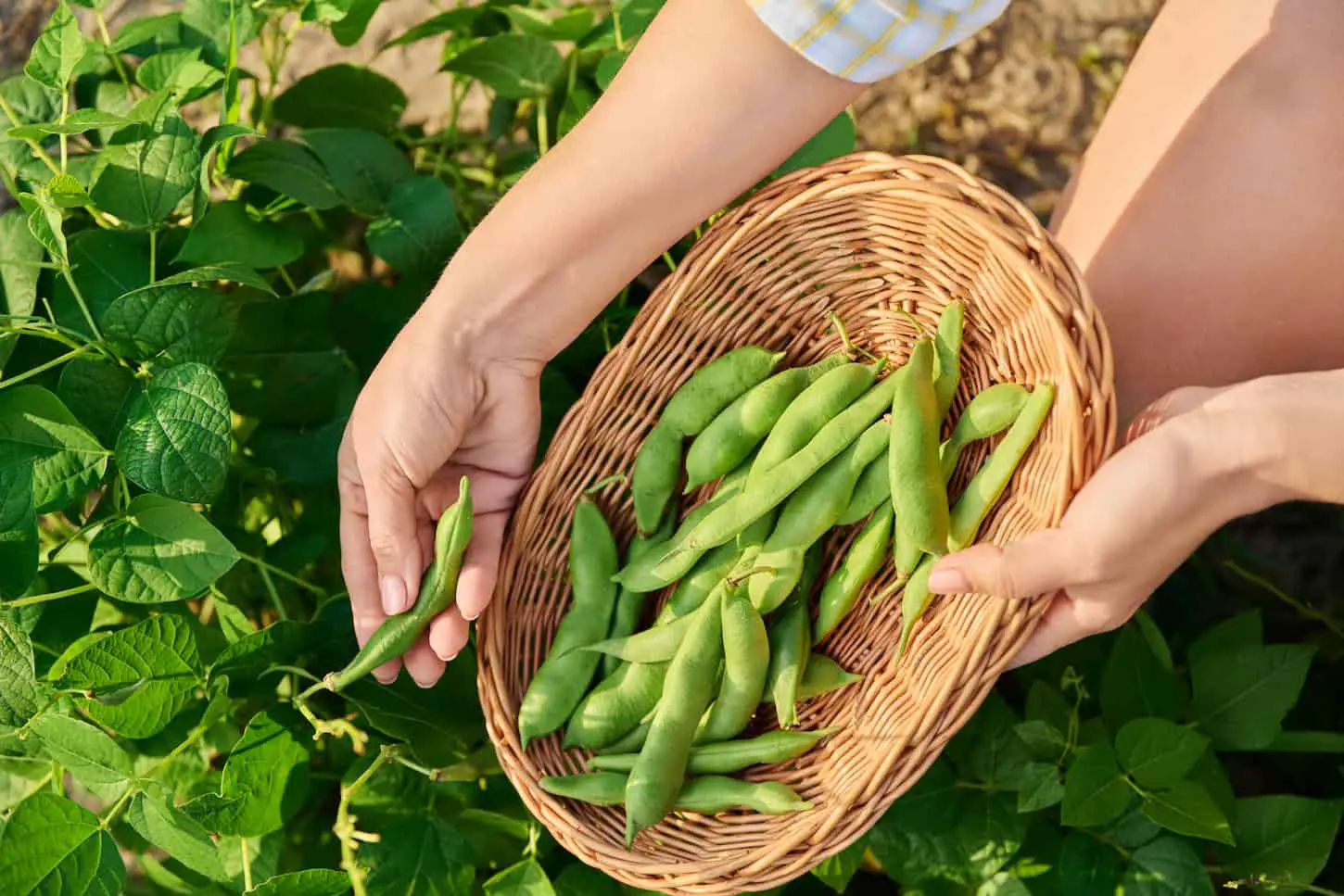
When to Harvest Green Beans?
Most green bean bush varieties are ready for harvest about 50 days after planting, although pole beans need about 10 to 15 days more. It’s best to harvest them before they’re fully mature – they are considered fully ripe when the beans within the pods cause the pod walls to bulge.
Harvest the green beans before this happens.
They lose some of their juices and gain more fiber after reaching maturity, so they usually taste better before they’re officially ripe.
How to Store Green beans (and How Long They Last)
Green beans are often stored for long periods, though they can also be eaten immediately. Green beans can last anywhere from days (in the fridge) to months (in a freezer) to years (canned) to decades (freeze-dried).
Here are the most common methods of storing them.
Raw beans
Raw beans can be stored in the refrigerator for up to 10 days without losing nutrients or their quality (source). Make sure to put them in a container or a Ziploc bag with minimal air inside so they don’t lose their freshness.
Beans should not be stored below 41°F as they can suffer cold damage.
Canned beans
Canned beans can retain their quality for more than a year, but they should be eaten within 2 years as they lose nutrients and juiciness after that.
To can beans, fill a jar with beans almost to the top, leaving only an inch of free space. Cover the jar with boiling water, freeing the top inch of space. After that, attach the metal lids.
That’s the simplified version of how to can green beans. You can find the recommended process times for beans in dial-gauge and weighted-gauge pressure canners at this link or in your favorite canning book.
I have this canning book (click here to see it on Amazon), and it’s a great one to get. It also often comes in a kit with canning supplies, so make sure you look for that option at your local grocery store – I’ve never seen that particular deal online.
Freeze-dried beans
To freeze dry beans, we’ll need a freeze-dryer. These machines suck out the air and moisture, and then we can pack the beans neatly in an air-free bag. Since oxygen and moisture are the primary elements of organic material decomposition, it will take a very long time before the beans start decomposing.
If you don’t already have a freeze dryer, this is the brand I use and recommend, or you can read why they’re the best in this article I wrote here.
Freeze-dried beans have a longer shelf life than frozen beans. Frozen beans can stay in the freezer for 10 months before losing their quality. Freeze-dried beans can store for more than a year, but the exact period depends on the storage method (it should be kept in a cool and dark place).
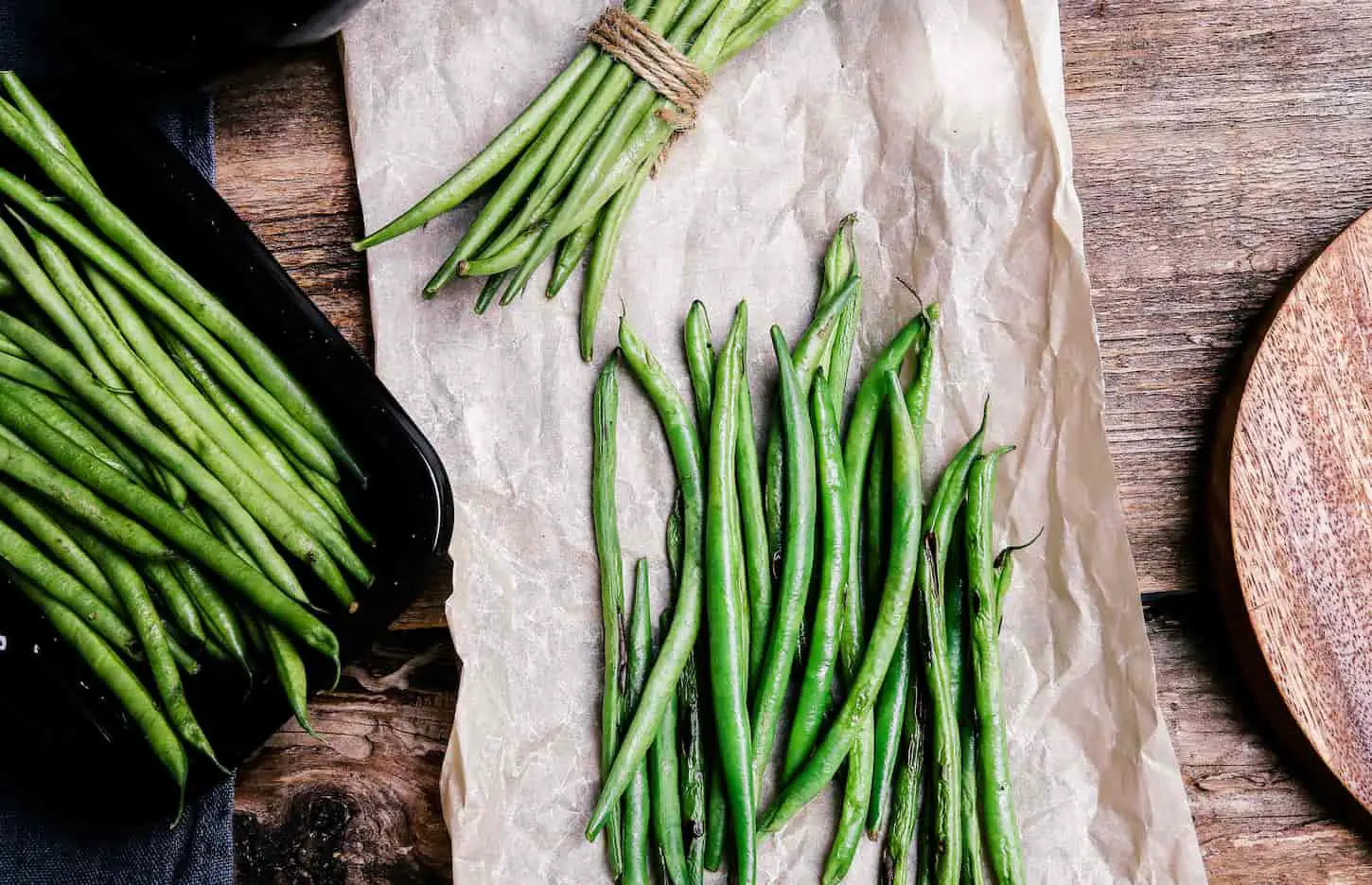
How to Use Stored Green Beans
Stored green beans can be used in any recipe, though how they were stored may affect the final dish’s result and flavor. If the goal is to be able to use stored green beans without any change in their flavor or nutrition, be sure to use freeze-dried green beans in any recipe.
Recipes such as bacon-wrapped beans and Mediterranean-style bean salad are very popular, but green beans are most popular because of how simple a side dish they make. They’re also very healthy because of the amount of vitamins A and C.
Green beans technically can be eaten raw – but it’s recommended that they’re cooked. Cooking them for a short while won’t cause any loss in quality, and it will massively improve the taste.
Simply serving them as a cooked side dish with a bit of salt, pepper, and olive oil makes a tasty and healthy option.
Important note: if you’re using freeze-dried green beans, they will need to be rehydrated (or reconstituted) before eating.
- If they’re being cooked, they will naturally reconstitute during the baking process (just add some extra water).
- If the green beans are being eaten raw, they may need to be rehydrated or served with extra water.
Next Steps
Now that you’ve read more about growing green beans get out there and plant a couple of your favorite varieties – whether they’re pole or bush types.
Then, check out these other articles we’ve written that thousands of readers like you have read next.
- How to Freeze Dry and Store Your Favorite Foods: Guide with Pictures
- Do Beans Grow on Trees?
- Freeze Drying vs Canning: What You Need to Know
Resources
Learning from your own experience is essential, but learning from others is also intelligent. These are the sources used in this article and our research to be more informed as homesteaders.
- “Bean and Southern Pea Insect Pests | Home & Garden Information Center.” Home & Garden Information Center | Clemson University, South Carolina, 20 July 2022, hgic.clemson.edu/factsheet/bean-southern-pea-insect-pests.
- “Green Beans: How to Grow It.” SDSU Extension, extension.sdstate.edu/green-beans-how-grow-it. Accessed 3 Sept. 2022.
- Griffin, Randall, and Joey Williamson. “Bean and Southern Pea Insect Pests | Home & Garden Information Center.” Home & Garden Information Center | Clemson University, South Carolina, 20 July 2022, hgic.clemson.edu/factsheet/bean-southern-pea-insect-pests.
- “Growing Beans in Home Gardens.” UMN Extension, extension.umn.edu/vegetables/growing-beans. Accessed 3 Sept. 2022.
- Hack, Karen, and Virginia Flynn. “Green Beans: Gardening with Two’s.” Day Care & Early Education, vol. 13, no. 1, 1985, pp. 14–17. Crossref, https://doi.org/10.1007/bf01627153.
- “How to Preserve Pole and Bush Beans.” USU, 5 Nov. 2021, extension.usu.edu/preserve-the-harvest/research/pole-bush-beans.
- Westerfield, Robert. “Home Garden Green Beans.” UGA Cooperative Extension, 1 June 2009, extension.uga.edu/publications/detail.html?number=C1006&title=Home%20Garden%20Green%20Beans#Types.